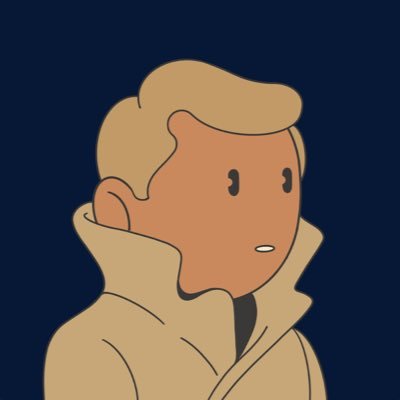About LaurenceFuller

Storyteller. Actor. Poet. King Of Paradise
An interview with LaurenceFuller led by Carlo Borloni


The Fortune is rooted in your award-winning novella and explores humanity’s complex relationship with nature through the lens of whaling. Can you share how the idea evolved from a written narrative into a cinematic poetry and immersive exhibition?
I first became interested by the plight of the whales about ten years ago. There was Sea Shepherd and their pirate-like efforts to stop whaling hands on in the Southern Ocean and then The Cove. Their rebellious and decisive actions made me pay attention.
Around this time my mother started painting a lot of whales, Migaloo the white whale off the coast of Australia.
It seemed to me there was something mysterious about the whale’s song.
This sound which read like a biography of the animal, where they have been, their relationships, what they discovered and how they felt about their environment, and their psychology are all subtle notes in this echo which they send outwards from their body to communicate for miles around. A novella in itself, and a poem from the ocean that is being constantly recited from the beneath the surface of the waves.
Yet man’s connection to whales has thus far been a superficial one of extracting basic resources from their bodies, their blubber and their bones. Millions of whales once thrived in our oceans ~ yet by the time the international moratorium on commercial whaling was put into affect in 1986 some species were hunted to the brink of extinction. You hear these facts and it sounds like a cause like any other. But there was something much more than that.
For me they symbolize the soul of the ocean, and of Mother Nature itself. I went back and read the Novella I wrote about whaling in 2020, and I saw it was very cinematic, the language was very visual and it was nominated for several awards under “cinematic writing” categories.
The characters centre around the generational traditions of whaling in Iceland. And it was the opportunity posed by NINFA and Nolcha Shows to create a series of cinematic works for Miami that challenged me to take on this subject.
By adapting the story into cinematic poetry, I could weave visuals, narration, and music into a deeply immersive experience.
The transition allowed me to explore the text as a living, breathing entity, one where viewers could step into the luminous mist of the sea, hear the whales’ haunting song, and feel the weight of time through layered, evocative imagery.


The collection features themes like legacy, spiritual connection, and humanity’s exploitation of nature. What personal or artistic experiences led you to tackle such profound and timeless issues?
Growing up, I was deeply influenced by stories of the sea—both its beauty and its brutality. The concept of whaling, with its dual nature of human ambition and destruction, felt like a powerful metaphor for our relationship with nature, Mother Nature and our own human nature, the laws of human nature.
My father’s philosophy of Mother Nature being an integral factor to artistic life lead me to explore how personal legacy intersects with global responsibility. The Fortune became my way of processing these ideas, of reconciling the awe I feel for nature with the grief of what we’ve lost through exploitation.
It’s both a personal and universal journey, exploring how our actions echo through time.
I thought more on that concept of a Whales echo and realized that we must be etched in that music as much as we speak of the whales to eachother.


Collaboration plays a significant role in The Fortune, with AI models trained on Stephanie Fuller’s brushstrokes. How did these collaborations influence the final vision?
The collaborative process was essential to expanding The Fortune beyond my own imagination.
It’s no mistake that these were trained on my mother’s brushstrokes.
Seeing as Mother Nature is an essential theme to this story and the artworks and that she has been painting whales for many years.
My father’s writings on art and psychoanalysis and his reading of DW Winnicott’s infant mother relationship where transitional objects like a baby’s blanket serve as metaphors to play out larger concepts in society, forming the basis for human’s fundamental need for art to understand in ways logic and reason cannot explain.
My mother’s brushstrokes served as the material basis for the visuals, Mother Nature is created the model from which this world of The Fortune was born and the whales swam in the ocean of our dreams.


Each act of The Fortune represents a distinct chapter in this narrative. Can you elaborate on the emotional and thematic journey viewers will experience from The Harpoon to Patience Is a Kiss?
The journey begins with The Harpoon, a portrait of Uncle Svenson and the legacy of whaling—a brutal yet deeply human story of ambition, power, and loss. This sets the tone for the exploration of humanity’s relationship with nature.
Act II, The Echo, shifts to a deeply personal perspective, as a whaler dreams of home and love while reconciling the sacrifices made at sea.
Act III, The Whale’s Song, dives into the spiritual realm, where the protagonist connects to the ancient resonance of the whales and the mysteries of the ocean, finding harmony in their song.
The final act, Patience Is a Kiss, is a reflection on love, destiny, and transformation—a culmination of the emotional and spiritual discoveries made along the way.


The medium of NFTs often raises questions about the intersection of technology and art. What does the integration of Web3 and AI bring to your storytelling, and how does it complement the traditional poetic and cinematic elements?
There’s many artists who create still image artworks that I love Tania Rivilis, Henrik Uldalen, Jenni Pasanen, Victoria West and Peter Howson to name a few, all of whom I have collaborated with.
To be authentic to my own understanding of the world I was always going to be a storyteller in some way and a video artist. To see the world through a dreamlike cinematic lens.
The formats for video art have been really problematic up until now. I think of Matthew Barney DVDs selling for hundreds of thousands of dollars, the most expensive selling for $500k. I’m a huge fan of Matthew Barney one of my favorite performance artists and video artists of all time. But DVDs cannot be the best format for his art, and I believe the format in this case has held back the true value of the artwork.
Also from a storytelling perspective in this case three video artworks can become a triptych ~ and digital artworks can connect to eachother in ways they never were able to before.


You’ve portrayed iconic figures on screen, including David Hockney, and worked extensively as an actor and writer. How have these creative disciplines informed your approach to The Fortune?
My experience as an actor taught me how to inhabit stories viscerally, to understand language as lived experience. Much of writing for most people, stays on the page, acting is really the one kind of experience where literature comes to life in a fully realized way.
Especially the way I wanted to do it, like an immersive experience, to be enveloped in the world. Like a blanket.
For The Fortune, I approached each panel like as a character unto itself ~ imbuing each act with its own voice and emotional arc.


Nature is central to this work, particularly the symbolism of the whale. How do you hope viewers will connect with the environmental and spiritual messages of the exhibition?
The whale’s song is really the most poignant metaphor this world has created for the unseen poetry that’s all around us.
I hope The Fortune sparks a sense of reverence for the majesty of nature and a reflection on our shared responsibility to protect it.


As The Fortune debuts during Miami Art Week in partnership with Nolcha Shows and Scope Art Fair, what role does the immersive aspect play in making the exhibition resonate with audiences?
This is an artwork that you have to feel and experience, whether that’s on the big screen at home or all around, swimming through oceans of the unknown.


Your late father, art critic Peter Fuller, influenced your understanding of fine art. How has his legacy shaped your perspective on creating art that bridges classical and contemporary elements?
My father’s work instilled in me a deep appreciation for the intersection of tradition and innovation. He believed in art as a reflection of humanity’s spiritual and intellectual struggles, and I’ve carried that belief into The Fortune. I aim to honor his legacy while forging a new path.
His deep study into art, was one of the most comprehensive of the 20th Century, and not that he was correct in his assertions, but that he had them, that he thought through these matters that affect art and human life so extensively, that pertained to philosophy, politics, ecology and ultimately spiritual matters through the canvas.


Lastly, your poetic verse, “Fortune is the home we find ourselves,” is a poignant meditation. What do you hope this project communicates about the human condition and our relationship with time, nature, and destiny?
The Fortune is you.

Sign up for our newsletter to keep up with the latest news from NINFA
Sign up for our newsletter to keep up with the latest news from NINFA
Write us at: info@ninfa.io, or click here if you need support
Copyright © 2025 Ninfa Labs - 12094240962 - All rights reserved

